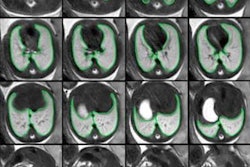Dear Women's Imaging Insider,
Prof. Daniela Prayer's team at the Medical University of Vienna has a longstanding reputation for fetal MRI. Any new research from her group is well worth a close look, so you won't want to miss today's top article.
Radiomics is a highly promising quantitative image analysis method that can help extract more information from images than is feasible by visual assessment alone. The fetal imaging group in Vienna is convinced that it has clinical potential in evaluating lung development.
In another report posted today, Irish investigators have tested a machine-learning algorithm that analyzes radiomics features on dynamic contrast-enhanced MRI images. The algorithm helps to differentiate between benign and malignant breast lesions, they reported.
How can pelvic MRI be used to diagnose deep infiltrating endometriosis? How does the technique compare with transvaginal ultrasound? Authors from Pierre and Marie Curie University in Paris have addressed these questions in a recent publication.
Medical tribunals in the U.K. are generally open and transparent. Radiologists rarely appear in these tribunals, but in a recent case, a musculoskeletal radiologist was investigated for conducting a "sexually motivated" breast examination. Get the full story in this article.
Last but not least, Dr. Nathalie Hottat, a clinical radiologist at Burgmann University Hospital in Brussels, Belgium, and her colleagues have reported that diffusion-weighted MRI can help predict breast cancer patients' response to neoadjuvant chemotherapy.
This letter has highlighted some of the numerous articles posted in the Women's Imaging Community over recent weeks. Please take a close look at the full list below, and feel free to contact me if you have ideas for future coverage.




















